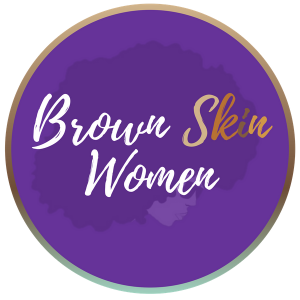Let’s get started on understanding natural hair maintenance. The maintenance of hair directly correlates to its health. We’re often told that in order to improve our hair, we should use protective styles. This rhetoric suggests that keeping our hair untouched for weeks, even months will produce healthier hair. This isn’t true at all, in fact, it’s the opposite. This tactic can ultimately damage your hair and allow scalp issues to persist. Today, we’re going to discuss the Protective Style Scale. This scale identifies which hairstyles and regimens are the healthiest for your hair.
Before we begin, understand that Brown Skin Women is a safe space to learn about hair. It’s not possible for everyone to follow a high-maintenance routine. Some of us may have jobs that do not allow certain hairstyles or don’t have the patience to do our hair every week. The Protective Style Scale is meant to help you understand how your current level of maintenance affects your hair health. No matter where you fall on the scale, we’ll provide you with ways to take the best possible care of your hair.
There are 3 points on the Protective Style Scale
NO MAINTENANCE
This term was coined by Jessica L. in the comment section of a recent Tiktok video. It perfectly describes what we often call “protective styles,” such as single braids, weaves, and wigs. The scalp and hair aren’t thoroughly washed (if at all) until the style is taken down. Wearing protective styles back to back doesn’t allow for regular cleansing or hydration. This is why it’s called “no maintenance.” The hair is rarely touched.
How does forgoing cleansing create problems? You must remember when understanding natural hair that the scalp is skin. Just like our bodies, the skin has to be washed regularly. No maintenance hairstyles allow for dead skin, oils, and products to build up. This causes irritated scalps and unhealthy hair. The hair may even have trouble absorbing water when it’s washed if kept in no maintenance hairstyles for too long.
No maintenance hairstyles are for those who do not want to deal with their hair for an extended period of time. This hair is the least healthy on the scale because it prioritizes style over proper care.
LOW MAINTENANCE
Next on the scale is a low-maintenance routine. Those who fall into this category take care of their hair regularly, but not often enough for optimal hair. The hair and scalps are washed every two or three weeks. While that may not seem like a long time in our community, it is. When you wash your hair, you’re hydrating it with water. If you’re only washing once or twice a month, that’s how often you’re replenishing your hair.
This creates dehydrated hair and allows for a dirty scalp. A dirty scalp can cause itchiness, flaking, and other issues. Our community often turns to butters, greases, and oils to remedy these problems. However, these very products are only a temporary cure and will cause further buildup.
Low-maintenance routines are for people who want healthy hair but don’t want to commit to a weekly wash and style. It’s common for those in this category to wear protective styles as well, but less often than no maintenance. Since the hair isn’t cleaned as frequently as it should be, this hair is semi-healthy.
HIGH MAINTENANCE
The last point on the Protective Style Scale is high-maintenance. High-maintenance routines allow for the healthiest hair but require the most commitment and consistency. The hair needs to be washed and styled weekly. This method provides needed hydration and keeps the scalp clean, which promotes hair health and growth. High-maintenance hair care is the actual solution for the scalp problems mentioned above. If you experience scalp problems after adhering to this routine, see a dermatologist for help. This maintenance level also requires quarterly trims.
High maintenance often has a poor connotation, but not in this case. The hair on this part of the scale is the healthiest. There’s still a variety of hairstyles to choose from when adhering to this hair care system. Space buns, twist-outs, and wash n go’s are just a few to help you get started. However, the best styles for high-maintenance hair are loose ones. This portion of the scale is designed for Curlfriends that want the healthiest hair possible.
Now that you know the different types of maintenance, let’s learn how to take care of each one!
Congratulations! You’ve started the journey of understanding natural hair.

